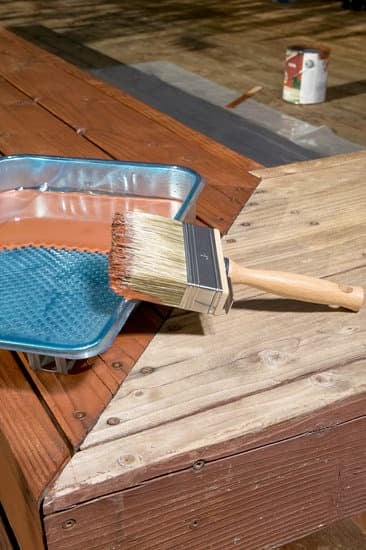One of the key considerations for homeowners when planning home improvements is understanding the potential financial impact on taxes. Home improvements can enhance the value of a property and can also have tax implications, both in terms of deductions and increased property value. Estimating the value of these home improvements accurately is essential for ensuring that homeowners optimize their tax benefits and avoid any unexpected liabilities.
In this article, we will explore the importance of estimating the value of home improvements for tax purposes and how it can affect your overall tax liability. We will delve into different methods that you can use to estimate the value of these improvements and understand their eligibility for tax deductions. Additionally, we will discuss crucial factors that influence the value estimation process, such as depreciation and market conditions.
We will also provide tips and best practices for accurately estimating the value of home improvements for taxes, as well as explore real-life examples through case studies. Lastly, we will highlight when it may be beneficial to consult with tax professionals to ensure compliance with tax laws and maximize your potential tax benefits.
By empowering homeowners with knowledge about estimating the value of home improvements on taxes, this article aims to guide them in making informed decisions about their property enhancements while understanding their potential financial consequences from a taxation standpoint.
The importance of estimating the value of home improvements for tax purposes
Estimating the value of home improvements for tax purposes is a crucial step in managing your finances as a homeowner. This section will discuss the importance of accurately estimating the value of your home improvements when it comes to taxes.
One major reason why it is important to estimate the value of home improvements for tax purposes is that it can potentially help reduce your taxable income. Certain home improvements may be eligible for tax deductions or credits, and accurately estimating their value can maximize these benefits. For example, if you have made energy-efficient upgrades to your home such as installing solar panels or upgrading to energy-efficient windows, you may be eligible for federal or state tax credits.
Another reason why estimating the value of home improvements is important for taxes is that it can affect the cost basis of your property. The cost basis is used when determining the gain or loss on the sale of a property. By properly documenting and estimating the value of your home improvements, you can increase your cost basis and potentially reduce any capital gains tax liability when you sell your property.
Estimating the value of home improvements for tax purposes also provides homeowners with a clearer understanding of their overall financial situation. By keeping track of the value of their investments in their homes, homeowners are able to make more informed decisions about future renovations and understand how these improvements may impact their taxes in years to come.
Assessing the eligibility of home improvements for tax deductions
When it comes to tax deductions, not all home improvements are created equal. Before estimating the value of your home improvements for tax purposes, it is important to understand which expenses are eligible for tax deductions. Assessing the eligibility of home improvements for tax deductions can help homeowners maximize their potential tax savings.
The Internal Revenue Service (IRS) provides guidelines on what types of home improvements are eligible for tax deductions. Generally, home improvements that increase the value or prolong the useful life of your property may be deductible. This includes things like adding a new roof, installing energy-efficient windows, or improving the overall functionality of your home.
On the other hand, cosmetic upgrades or repairs that do not significantly impact the value or useful life of your property are typically not eligible for tax deductions. Examples of non-deductible expenses include painting walls, replacing carpets, or repairing minor damage.
To determine if your home improvement expenses qualify for tax deductions, it is advisable to consult IRS publications or seek guidance from a qualified tax professional. They can help you navigate through the complex rules and regulations surrounding home improvement deductions and ensure that you take full advantage of available tax benefits.
In summary, assessing the eligibility of home improvements for tax deductions is an essential step in estimating their value on taxes. By understanding which expenses qualify for deductions and which do not, homeowners can make more accurate estimations and potentially save on their tax bill.
| Eligible Home Improvements | Ineligible Home Improvements |
|---|---|
| Adding a new roof | Painting walls |
| Installing energy-efficient windows | Replacing carpets |
| Improving overall home functionality | Repairing minor damage |
Exploring different methods to estimate the value of home improvements on taxes
When it comes to estimating the value of home improvements for tax purposes, homeowners have several methods at their disposal. It is important to explore these different methods to ensure an accurate estimation of the value of home improvements on taxes.
Comparative Market Analysis (CMA)
One method that homeowners can use to estimate the value of home improvements on taxes is a Comparative Market Analysis (CMA). A CMA involves analyzing recent sales data for similar properties in the area that have undergone similar home improvements. By comparing these sales prices with and without improvements, homeowners can get an idea of the potential increase in value that their own improvements may have brought.
It is important to note that a CMA will only provide an estimate and should not be taken as a definitive value for tax purposes. However, it can serve as a useful starting point when trying to assess the impact of home improvements on taxes.
Cost-Based Method
Another method that homeowners can use is the cost-based method. This method involves estimating the actual cost incurred for making the home improvements and using this figure as an indicator of increased property value. Homeowners would need to consider both labor and material costs when calculating the total cost.
While this method may seem straightforward, it is crucial to keep in mind that not all home improvements directly translate into an increase in property value. For example, improving personal preferences such as adding luxury features might not add significant monetary value when it comes to tax assessments.
Professional Appraisal
For a more accurate estimation, homeowners can opt for a professional appraisal of their property after completing home improvements. A professional appraiser will conduct a thorough evaluation and consider various factors such as location, quality of materials used, extent of improvement, and comparable sales in the area. This comprehensive assessment will provide a reliable estimate of the increased property value due to the home improvements.
While a professional appraisal may come with a cost, it can provide homeowners with a precise value for tax purposes. This method is especially useful when dealing with large-scale renovations or extensive improvements that significantly impact the value of the property.
By exploring these different methods, homeowners can gain a better understanding of how to estimate the value of home improvements on taxes. Each method has its limitations and considerations, so it is important to choose the approach that aligns best with the specific situation and property being assessed.
Section 179 Deduction
The Section 179 Deduction is a tax provision that allows taxpayers to deduct the full costs of qualifying property and equipment, including certain home improvements, in the year they are placed in service. Understanding the impact of the Section 179 Deduction on home improvement taxes is crucial for homeowners looking to maximize their tax benefits.
One method to take advantage of the Section 179 Deduction is by categorizing home improvements as “qualified real property.” This includes improvements such as roofs, HVAC systems, fire protection systems, and security systems. By doing so, homeowners can potentially deduct the full cost of these improvements in the year they are completed, rather than deducting them over several years through depreciation.
To qualify for the Section 179 Deduction, the improvement must meet certain criteria set by the Internal Revenue Service (IRS). The improvement must be tangible personal property that is used primarily for business purposes or used in connection with an income-producing activity. Additionally, it must not change the use of the property or be a structural component of the dwelling.
It’s important to note that there are limits on how much can be deducted under the Section 179 Deduction. Currently, there is a maximum deduction limit of $1,050,000 for qualified real property placed in service during the taxable year. However, this limit may change from year to year based on IRS regulations and updates to tax laws.
Evaluating the different factors that affect the value of home improvements for tax purposes
When estimating the value of home improvements for tax purposes, it is crucial to take into consideration various factors that can affect their overall value. These factors play a significant role in determining the extent to which you can claim tax deductions or benefits based on your home improvement expenses. By evaluating these factors, homeowners can ensure that they accurately estimate the value of their home improvements on taxes and maximize any potential deductions or benefits.
The nature and purpose of the home improvement
One important factor to consider when evaluating the value of home improvements for tax purposes is the nature and purpose of the improvement. Different types of improvements may have varying levels of eligibility for tax deductions or benefits.
For example, energy-efficient upgrades such as solar panels or insulation may qualify for specific tax credits or incentives aimed at promoting sustainable practices. On the other hand, cosmetic renovations like new paint or flooring may not be eligible for any tax deductions.
The longevity and usefulness of the improvement
Another factor to assess is the longevity and usefulness of the home improvement. Tax authorities often consider whether an improvement adds long-term value to your property or if it has a limited lifespan. Improvements that are expected to increase your property’s value and provide benefits over an extended period are generally more likely to be eligible for tax deductions compared to short-lived enhancements.
Applicable local regulations and laws
It is essential to familiarize yourself with any applicable local regulations and laws that may impact the value of your home improvements for tax purposes. Some jurisdictions offer specific tax exemptions or credits for certain types of improvements. For instance, some areas provide financial incentives for making accessibility modifications to accommodate individuals with disabilities or senior citizens. By understanding these regulations, homeowners can accurately estimate the value of their improvements based on local tax laws.
By thoroughly evaluating these factors when estimating the value of their home improvements, homeowners can ensure they make informed decisions about their taxes. This evaluation process enables individuals to determine the eligibility of their improvements for tax deductions, understand the potential benefits they may receive, and accurately estimate the value of these improvements on their taxes. Having a clear understanding of these factors empowers homeowners to make wise financial decisions when planning and executing home improvement projects.
Tips and best practices for accurately estimating the value of home improvements on taxes
Accurately estimating the value of home improvements for tax purposes is crucial in order to ensure that homeowners receive the appropriate deductions and avoid potential penalties. Here are some tips and best practices to help you accurately estimate the value of your home improvements on taxes:
- Keep thorough records: It is essential to keep detailed records of all expenses related to your home improvements. This includes receipts, invoices, contracts, and any other relevant documentation. These records will serve as evidence of the expenses incurred and will be necessary when estimating the value of the improvements for tax purposes.
- Understand what qualifies as a deductible expense: Not all home improvements are eligible for tax deductions. Familiarize yourself with the IRS guidelines on what qualifies as deductible expenses. Generally, improvements that increase your home’s value, adapt it to new uses, or prolong its useful life may be eligible for deductions.
- Determine the fair market value of the improvements: In order to estimate the value of your home improvements for tax purposes, you need to determine their fair market value. This can be done by conducting research on similar properties in your area that have undergone similar upgrades or renovations. Real estate websites and appraisers can provide valuable information in determining market values.
- Consult an appraiser or real estate professional: If you find it challenging to accurately estimate the value of your home improvements on your own, consider seeking assistance from an appraiser or real estate professional. They have expertise in evaluating property values and can provide a more accurate assessment based on their knowledge and experience.
- Be aware of depreciation rules: Depending on the type of improvement made, you may have to account for depreciation over time. Recognizing how depreciation rules apply to different types of improvements is important when estimating their value for tax purposes.
By following these tips and best practices, homeowners can ensure that they accurately estimate the value of their home improvements on taxes while maximizing their eligible deductions. This will help them make informed decisions about their investments in their homes and ultimately reduce their tax burdens.
Consultation with tax professionals
When it comes to estimating the value of home improvements for tax purposes, seeking advice from a tax professional can be highly beneficial. While it is possible to estimate the value on your own, consulting with an expert ensures accuracy and compliance with tax regulations. This section will discuss when and why homeowners should consider seeking professional guidance for estimating the value of their home improvements on taxes.
One key reason for consulting a tax professional is the complexity of tax laws and regulations. The rules surrounding home improvement deductions can be intricate, requiring a thorough understanding of the specific criteria and requirements set by the government. By working with a tax professional, homeowners can benefit from their expertise and ensure that they properly assess the eligibility of their home improvements for deductions.
Additionally, tax professionals have access to specialized knowledge and resources that can help accurately estimate the value of home improvements on taxes. They stay updated on changes in tax laws, ensuring that homeowners do not miss out on any potential deductions or incentives. With their experience in handling similar cases, they are well-equipped to navigate through complex scenarios and determine the most appropriate methods for estimating home improvement values.
Furthermore, consulting with a tax professional can provide peace of mind for homeowners. Tax audits are always a possibility, and having an expert guide you through the process ensures that your estimates are defensible should you ever face scrutiny from tax authorities. Their assistance also minimizes the risk of errors or omissions which could result in penalties or legal issues down the road.
Real-life examples
One effective way to understand how to estimate the value of home improvements on taxes is through real-life case studies. These case studies serve as practical examples that illustrate how different factors can impact the tax implications of home improvements. By examining these examples, homeowners can gain insight into the process and make more informed decisions regarding their own home improvement projects.
For example, let’s consider a case where a homeowner installs solar panels on their property. The cost of the solar panel installation was $20,000, and they were able to claim a federal tax credit for 26% of the total cost. In this case, it is important for the homeowner to accurately estimate the value of the solar panels for tax purposes.
To do this, they would need to determine if the solar panels increase the overall value of their property. The homeowner may consult with a local real estate agent or appraiser who specializes in green initiatives and energy-efficient homes. By getting an expert opinion on how much the solar panels contribute to increasing the property value, the homeowner can make an informed estimation for tax deduction purposes.
In another case, let’s consider a homeowner who renovated their kitchen by installing new appliances, countertops, and flooring. The total cost of these improvements was $30,000. However, not all aspects of this kitchen renovation may be eligible for tax deductions. For instance, while replacing old appliances with energy-efficient models may qualify for certain energy efficiency tax credits, aesthetic upgrades such as new countertops and flooring may not be eligible.
In this scenario, it is crucial for homeowners to carefully evaluate which components of their home improvement project are eligible for tax deductions and estimate their value accordingly. Consulting with tax professionals or researching IRS guidelines can help homeowners understand which expenses are deductible and what documentation is required when estimating the value of these improvements.
By studying real-life cases like these, homeowners can gain valuable insights into the nuances of estimating the value of home improvements for tax purposes. These examples highlight the importance of considering factors such as expert opinions, eligibility criteria, and specific IRS guidelines when making these estimations. Furthermore, they emphasize the need for accurate documentation and collaboration with tax professionals to ensure compliance with tax laws and regulations.
Conclusion
In conclusion, understanding the financial impact of home improvements on taxes is crucial for homeowners. As discussed throughout this article, accurately estimating the value of home improvements can significantly affect tax deductions and liabilities. By taking into consideration factors such as the eligibility of home improvements for tax deductions and different estimation methods, homeowners can ensure that they are making informed decisions and maximizing their potential tax benefits.
One essential concept to be aware of is the Section 179 Deduction, which can have a significant impact on home improvement taxes. This deduction allows homeowners to deduct the full cost of qualifying home improvement projects in the year they were completed instead of spreading it out over several years. Understanding how this deduction works and its potential benefits can help homeowners make strategic decisions about their home improvement projects.
To accurately estimate the value of home improvements for tax purposes, homeowners must consider various factors such as material costs, labor costs, and any additional expenses incurred during the project. Additionally, consulting with tax professionals can provide valuable guidance to ensure that estimations are accurate and compliant with current tax regulations.
In summary, by empowering homeowners to make informed decisions about their home improvements and taxes, this article has provided valuable insights into estimating the value of home improvements for tax purposes. By understanding eligibility requirements for tax deductions, exploring different estimation methods, considering factors that affect value, following best practices, seeking expert advice when necessary, and learning from real-life examples, homeowners can navigate the complexities of taxes relating to home improvements with confidence.
Ultimately, by making informed decisions based on accurate estimations, homeowners can maximize their potential tax benefits while enjoying the enhancements and added value brought by their home improvement projects.
Frequently Asked Questions
How much of home improvement is tax deductible?
Unfortunately, the majority of home improvements are not tax deductible. The Internal Revenue Service (IRS) considers most home improvement expenses to be personal expenses that do not qualify for a tax deduction. However, there are some exceptions and special circumstances where taxpayers may be eligible for deductions related to home improvements.
For instance, if the improvement is considered a medical necessity and prescribed by a licensed healthcare professional, some expenses may be deductible as medical expenses. Additionally, if the improvement qualifies as an energy-saving upgrade or is made for the purpose of accommodating a disability, there might be specific tax credits or deductions available.
Does the IRS require receipts for home improvements?
While the IRS does not typically require taxpayers to submit receipts for home improvements when filing their tax return, it is highly recommended to keep thorough records of all related expenses and supporting documentation. These records can be essential in case of an audit or if there are any questions regarding your tax return.
Receipts provide proof of payment and help establish the cost basis for determining any applicable deductions or credits. Without proper documentation such as receipts, invoices, contracts, and canceled checks, it becomes challenging to substantiate your claims regarding home improvement costs.
How do you prove home improvement to the IRS?
To prove home improvement to the IRS, it is crucial to maintain detailed records documenting the nature of the work performed, associated costs, and any other relevant information. This includes keeping copies of purchase receipts, invoices from contractors or service providers, contracts or agreements outlining the scope of work and payments involved, permits obtained (if applicable), before-and-after photos (when applicable), and any other supporting documents related to your home improvement project.
These records serve as evidence and help substantiate your claims when filing taxes or in case you face an IRS audit. Clear documentation ensures accuracy and legitimacy in claiming any eligible deductions or credits while providing transparency in your financial transactions pertaining to home improvements.

I’m thrilled to have you here as a part of the Remodeling Top community. This is where my journey as an architect and remodeling enthusiast intersects with your passion for transforming houses into dream homes.





